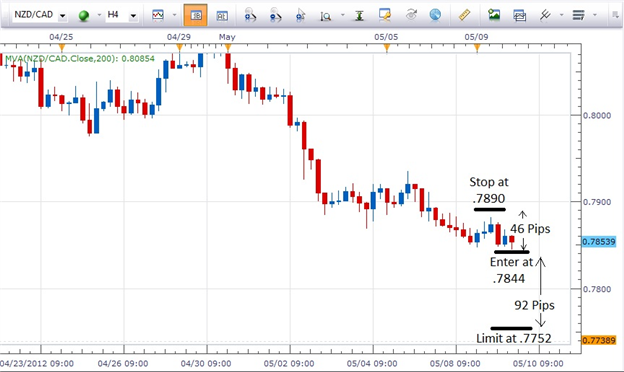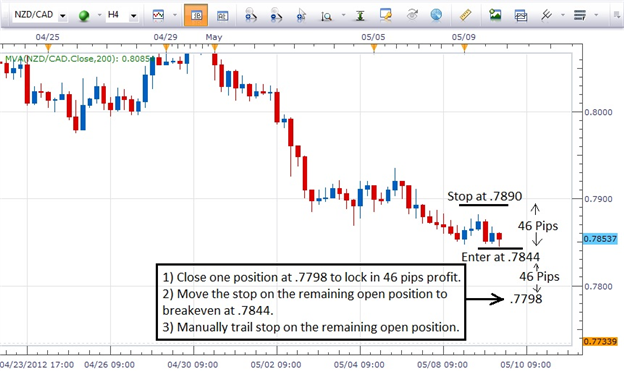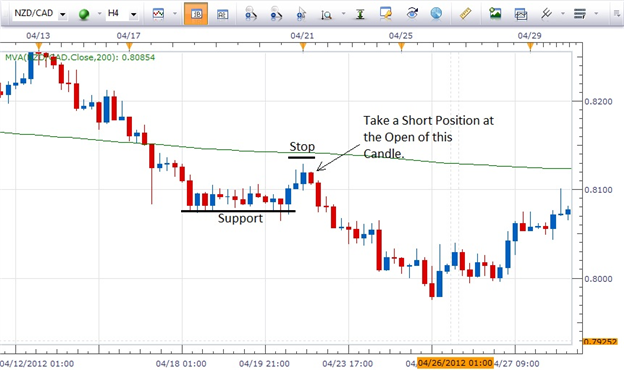Most newer traders tend to concentrate almost exclusively on ways to enter a trade and place virtually all of their focus on that aspect of trading. While entries are important, experienced traders will agree that managing and exiting a trade will have a greater impact on the level of success a trader may achieve.
One of the most effective methods for exiting a trade is simply to employ a Risk Reward Ratio on the trade. By doing so, there is no question of when to exit. If the limit is hit, you are profitably out of the trade. If the stop is hit, you are out of the trade with a small, manageable loss. This plan is very straight forward and it eliminates the chance of your emotions taking control…as long as you stick with the trading plan.
Let’s look at the 4 hour chart of the NZDCAD below…

In this example, if a trader were to employ a 1:2 Risk Reward Ratio on a trade (and that is the minimum that we would recommend), and a 46 pip stop were set, then a 92 pip limit would be set. With that done, just let the trade run until you are either stopped out or limited out on the trade.
Here is another strategy that could be employed if a trader were trading multiple lots.

Using the above scenario, a trader would open, let's say, two lots on a trade. At a predetermined level of profitability, in this case when the trade has moved the amount between the stop and the entry, 46 pips, one of the lots would be closed. At that point 46 pips of profit would be locked in.
On the remaining lot, the stop would be moved to breakeven...the point at which the trade was entered. When that is done, the trader would have removed risk of loss on that position.
Then, should that lot continue to move in the favor of the trader, the stop could be trailed at a respectable distance (perhaps 20-50 pips) to continue to lock in profit. The worst that could happen on the second lot would be if the trade would do an about face and retrace before the stop could be advanced. In that case, the trader would be stopped out on that lot at breakeven with no gain but no loss either.Lastly, a trader could simply observe levels of support and resistance.

On the example chart above, as the trade is approaching a level of significant support, the trader has several options open to them.
They could choose to close all positions and protect the roughly 40 pips per lot of profit that they gained as the trade moved down from their entry. Another option would be to close only a portion of the trade…half the positions for example.
If they believe that the price will move through support, they could choose to keep all positions open but perhaps tighten their stop to protect more of their profit should the pair indeed retrace.
By not closing all positions, the trader leaves themselves open to additional gain should price move through support (as we see it did in this case) and continue down.
Try utilizing each of the above numerous times in a demo account to gain a level of understanding before employing them in your live account.